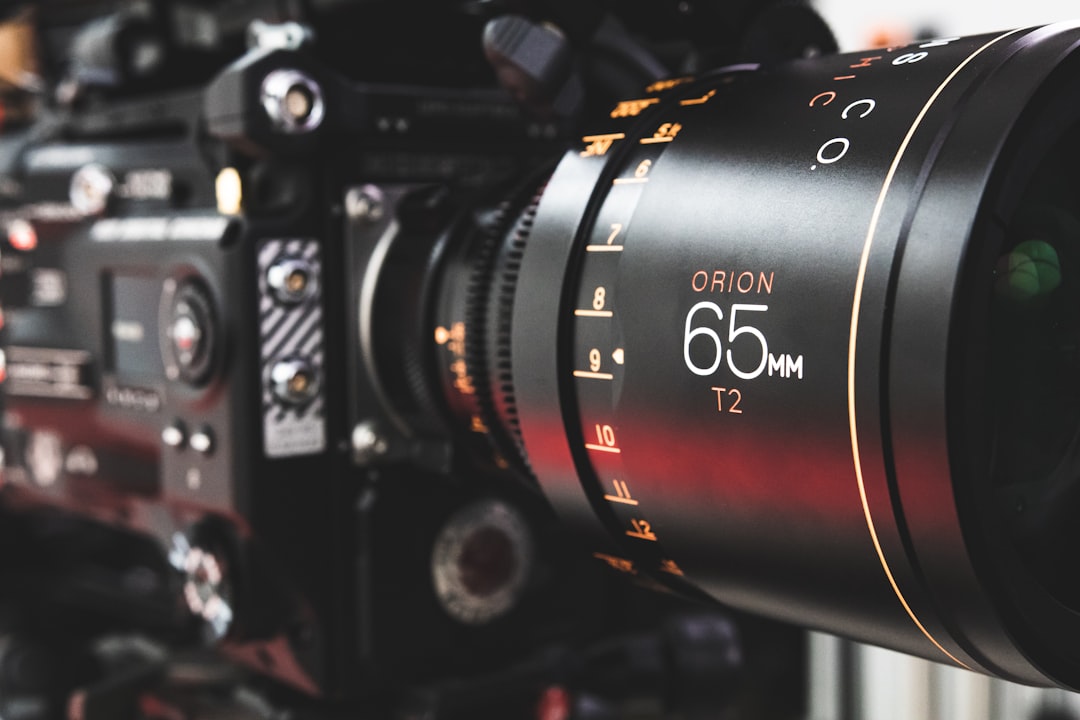VLC Media Player's 8K Video Support A Deep Dive into High-Resolution Playback Capabilities
VLC Media Player's 8K Video Support A Deep Dive into High-Resolution Playback Capabilities - Hardware Decoding Activation for 4K and 8K Playback
VLC's latest update brings a notable change for handling 4K and 8K video. The software now automatically activates hardware decoding, which is meant to give your computer's graphics card more responsibility for decoding the video, freeing up your CPU for other tasks. This is generally a positive change that should lead to smoother playback, especially when dealing with very high resolution videos.
It's worth noting that this automatic hardware acceleration might not work well on older computers. If you encounter problems playing back videos, you might need to manually disable this feature in VLC's settings. However, most users with modern computers should benefit from this change, with 4K playback being particularly seamless thanks to the automatic activation of hardware decoding.
VLC Media Player's version 30, dubbed "Vetinari," has a new feature that automatically turns on hardware decoding for 4K and 8K playback. This is a major improvement as it offloads the demanding task of video decompression from the CPU to the GPU, resulting in smoother playback without those annoying dropped frames.
It's interesting to see how the modern GPU landscape is influencing media playback. Many newer GPUs have built-in support for video codecs like HEVC and VP9, which are vital for handling these high-resolution formats. However, not all GPUs are created equal. While integrated graphics might be fine for 4K, 8K playback generally requires a dedicated graphics card due to the larger video files and the need for more memory bandwidth.
The efficiency of hardware decoding depends on several factors, including video resolution, bitrate, and codec. 8K video, with its four times higher pixel count compared to 4K, necessitates a minimum of 50 Mbps for smooth playback, underscoring the crucial role of appropriate hardware.
It's important to remember that even with the best hardware, it all comes down to drivers. Outdated or incompatible drivers can hinder the ability to fully utilize a GPU's decoding capabilities. Users might find themselves experiencing playback issues if their drivers are not up to date.
Aside from performance, hardware decoding also has the added benefit of extending the life of your computer. By reducing the strain on the CPU during demanding playback tasks, hardware decoding minimizes wear and tear, keeping your system cooler and running smoothly over time.
However, there are some challenges. Not every video file format is fully supported by hardware decoding without specific codecs activated in VLC. This might result in limitations for users.
Even though 8K content is still relatively new, having robust hardware decoding support is a wise move as it anticipates the future needs of media consumption. As we move towards an era where high-resolution content becomes the norm, features like this will be crucial.
VLC Media Player's 8K Video Support A Deep Dive into High-Resolution Playback Capabilities - 10-bit Video and HDR Content Support

VLC Media Player now supports 10-bit video and HDR content. This means it can handle a wider range of colors and contrasts, making for a more vivid viewing experience. This is especially important for HDR content, which needs a bit more work to make the most of its bright highlights and deep shadows. However, if your hardware isn't quite up to snuff, you may still experience some difficulties when playing back certain types of videos. Overall, this update shows that VLC is preparing itself for the future of high-definition media by improving its ability to handle increasingly complex content.
VLC Media Player's version 30 has integrated support for 10-bit video and HDR (High Dynamic Range) content. This is a significant development as it potentially expands the visual experience for users. The addition of 10-bit video, with its capability of displaying over a billion colors, significantly enhances the color palette compared to the standard 8-bit video. This is especially beneficial for HDR content, which aims to portray a wider spectrum of colors more realistically.
The increased color depth in 10-bit video helps minimize the occurrence of banding artifacts – those noticeable color steps that appear in gradients of standard 8-bit video. This is crucial for HDR content where smooth color transitions are essential. With 10-bit video, we now have the ability to encode and display more accurate and detailed colors at the subpixel level, contributing to the overall richness and clarity of the video image.
The introduction of HDR content further complicates the technical aspects of media playback. HDR content significantly enhances the contrast ratio, allowing for more detail in both the darkest and brightest parts of an image. This, coupled with the expanded color palette of 10-bit video, demands more advanced encoding and decoding capabilities from hardware and software.
While 10-bit video offers a superior visual experience, it's crucial to be aware of potential compatibility issues. Not all devices or playback systems are equipped to fully handle 10-bit video and HDR formats. Additionally, even with compatible hardware, outdated software codecs and libraries might hinder the optimal performance of 10-bit video playback.
Overall, the integration of 10-bit video and HDR content support in VLC Media Player is a positive development that aligns with the increasing demand for higher quality visual experiences. As the media landscape continues to evolve, the implementation of 10-bit video will become increasingly important for achieving a richer and more realistic visual experience, especially for HDR content.
VLC Media Player's 8K Video Support A Deep Dive into High-Resolution Playback Capabilities - 360-degree Video and 3D Audio Capabilities

VLC Media Player's version 3.0 took a significant step forward in supporting immersive content with its new 360-degree video and 3D audio capabilities. This means you can now explore 360-degree videos interactively using your mouse or keyboard. It even supports viewing 360-degree photos and panoramas, though the usefulness of that might be debatable. The software also now includes support for 3D audio, including Ambisonics 3rd order, which brings a new level of immersion to VR and immersive videos. This emphasis on spatial audio is further enhanced by the ability to customize the Head Related Transfer Function (HRTF) settings, offering a more realistic and enveloping soundscape. The overall effect is to create a richer, more engaging media experience. As VLC continues to embrace the evolving world of high-resolution and immersive content, these features demonstrate its commitment to supporting a wide range of formats and improving the user experience.
VLC Media Player has integrated support for 360-degree videos, which are becoming more common as VR content gains popularity. This is significant because it allows for a more immersive experience for VR users, who can now freely navigate virtual environments.
VLC also incorporates 3D audio, which attempts to simulate the natural way we hear sounds. This is particularly useful for 360-degree videos, where sounds are intended to be placed precisely relative to the viewer's perspective. VLC uses Ambisonics 3rd order, a spatial audio standard that's becoming more popular for VR and immersive content.
However, despite VLC's support for a wide range of formats, some 360-degree videos and spatial audio files may not be compatible. This means users have to ensure that their videos are encoded in a format that VLC can process efficiently. Additionally, a major hurdle for achieving smooth, real-time 360-degree video playback is the processing power needed to handle the large amounts of video data. Users with less powerful hardware might need to adjust their playback settings or risk encountering lagging.
Another area of focus is low latency streaming, which is crucial for real-time broadcasting of events like games or concerts. While VLC can offer low latency options for streaming 360-degree video, there are technical hurdles involved, particularly for large file sizes. This is where the support for advanced codecs like H.265 (HEVC) is a huge advantage, as it allows VLC to handle these large files efficiently.
VLC also allows users to control their viewpoint within a 360-degree video. Users can freely rotate the video using a mouse or touch gestures, offering more control than static, pre-defined perspectives. This capability makes for a more interactive experience, especially when combined with 3D audio that seems to move around you.
A further challenge is how to integrate VLC with VR devices. While VLC is open source, allowing developers to experiment with different applications, the implementation of head tracking - where the perspective of the video shifts according to the user's head movements - still needs to be refined for a truly immersive experience.
VLC Media Player's 8K Video Support A Deep Dive into High-Resolution Playback Capabilities - Audio Passthrough for High-Definition Codecs
VLC Media Player's latest version includes a feature that allows for audio passthrough with high-definition codecs. This means you can connect your computer to a home theater system and have audio played back in its original, high-quality format, without being compressed by VLC. This is a big deal for people who want to take full advantage of immersive sound formats like DTSX and Dolby Atmos, which are becoming increasingly common. The downside is that you'll need to configure this feature manually through VLC's settings, but this level of customization gives users more control over their audio experience. Ultimately, this addition further highlights VLC's commitment to providing a versatile and powerful multimedia player that meets the demands of modern entertainment systems.
VLC Media Player's latest version, 3.0, boasts a noteworthy feature called "audio passthrough" that significantly improves how audio is handled. It's essentially a way to bypass the usual steps of software processing and direct high-quality audio signals to external decoders, like your AV receiver. This process, while simple in concept, has some interesting consequences for audiophiles and technology enthusiasts.
Firstly, this direct route preserves the quality of audio formats like Dolby TrueHD and DTS-HD Master Audio, ensuring that the audio isn't degraded by software processing. Secondly, because the signal isn't delayed by software, audio passthrough significantly reduces latency, crucial for gaming or other real-time audio applications. This is especially important for multi-channel formats, like those used in surround sound setups, as these formats are becoming more popular and are increasingly used for high-definition audio content.
The problem is that not every system is capable of supporting all audio formats. You might encounter compatibility issues depending on the age of your hardware or the complexity of the specific codec. For example, a setup that seamlessly handles Dolby Atmos might struggle with less common formats. This underscores the importance of considering individual hardware limitations and ensuring that drivers are updated regularly to ensure the best audio passthrough performance.
While some formats like Dolby Atmos or DTS:X offer lossless audio, ensuring their integrity is a priority. The beauty of audio passthrough is that these audio formats can be transmitted without being re-encoded, which means that they reach the decoder without undergoing any lossy conversions.
It's clear that VLC is committed to staying at the forefront of the ever-evolving world of audio, especially given its adoption of newer audio formats like Dolby Atmos. As audio technology continues to advance and new codecs are developed, VLC will need to continue its focus on seamless audio passthrough to stay ahead of the curve. This will ensure that its users have access to the best audio experience possible, regardless of the evolving formats and technologies of the future.
VLC Media Player's 8K Video Support A Deep Dive into High-Resolution Playback Capabilities - Streaming to Chromecast Devices

VLC Media Player has expanded its capabilities to include streaming to Chromecast devices. This is a significant step, adding yet another option for viewers to enjoy their content. Users can easily cast videos to Chromecast-enabled televisions by navigating to the "Playback" menu and selecting their Chromecast device under "Renderer." This is made even more useful by the fact that VLC can stream content even in formats that Chromecast might not normally support. This shows that VLC is still trying to make the user experience better, especially in a world where 8K resolution and other high-tech features are becoming the norm.
VLC Media Player's version 30 introduces a new capability to stream video directly to Chromecast devices. While this might seem like a straightforward feature, it holds some interesting implications. VLC can even transcode files on the fly if the Chromecast doesn't support the native format, effectively expanding its compatibility.
This transcoding, however, isn't without its limitations. When dealing with 8K video, which requires a lot of processing power and bandwidth, streaming to Chromecast can sometimes lead to audio-video synchronization issues. This highlights the crucial role of a stable network connection when streaming high-resolution content. For optimal performance, you need at least 20 Mbps for 4K and 50 Mbps or more for 8K.
Despite these challenges, VLC's compatibility extends beyond Chromecast's native formats, allowing users to stream content in MKV or AVI, for instance. The software also offers granular control over playback features like customizable speed and subtitles, setting it apart from other streaming applications.
VLC can handle subtitles during playback, ensuring accessibility for viewers who need them. It also allows streaming to multiple Chromecast devices simultaneously, making it a versatile option for multi-room setups.
VLC's adaptive bitrate streaming automatically adjusts streaming quality based on network conditions, minimizing interruptions even when network performance fluctuates. However, while transcoding is a boon for compatibility, it can also lead to some quality loss, especially when transcoding high-resolution videos. This is something to consider for optimal streaming experiences on Chromecast.
VLC Media Player's 8K Video Support A Deep Dive into High-Resolution Playback Capabilities - Blu-ray Disc Playback with Java Menus
VLC's ability to play Blu-ray discs is a welcome feature, but it comes with a few quirks. The most significant issue is that Blu-ray menus, which are built using Java, require a compatible version of Java installed on your system. Otherwise, you'll only be able to access the main title and miss out on the interactive menus. It's worth mentioning that even with a Java installation, users might still run into problems with menus, such as crashes or errors. The libbluray library, an open-source component used for Blu-ray playback, aims to simplify the process, but some users report ongoing issues. To get around these issues, users may find it helpful to use MakeMKV alongside VLC to manage menus. This situation highlights the challenges of bringing traditional media formats into the modern world of digital playback.
Blu-ray Disc playback with Java menus, commonly known as BD-J, brings a world of interactivity beyond simple linear playback. While standard DVDs use static menus, Blu-ray Discs leverage Java for dynamic menus with animated transitions and real-time updates. It's like having a miniature program running within the disc itself.
The use of Java for these menus does come at a cost, however. It puts a heavier strain on your computer's resources, which can be noticeable on less powerful systems or when navigating complex menus. It also means not every media player is fully equipped to handle BD-J menus. Some might just show the video without the menus, which can limit the user experience.
Despite these potential drawbacks, BD-J menus offer some compelling benefits. They enable dynamic features like picture-in-picture, extra content, and real-time track selection, creating a more engaging experience. In fact, these menus use a specific version of Java, called Java ME, which is optimized for lower-memory devices.
This brings another challenge: optimization. VLC, like other players, relies on native performance enhancements, which can sometimes clash with the Java environment. This can affect playback smoothness, especially when juggling 8K video streams and demanding menu features.
But the future looks exciting for BD-J. It has the potential to become even more interactive, potentially integrating with live content, networks, or even user communities, creating a new paradigm in multimedia experiences. We're in the midst of an evolution with these interactive menus, and it'll be fascinating to see what the future holds.
More Posts from ai-videoupscale.com: